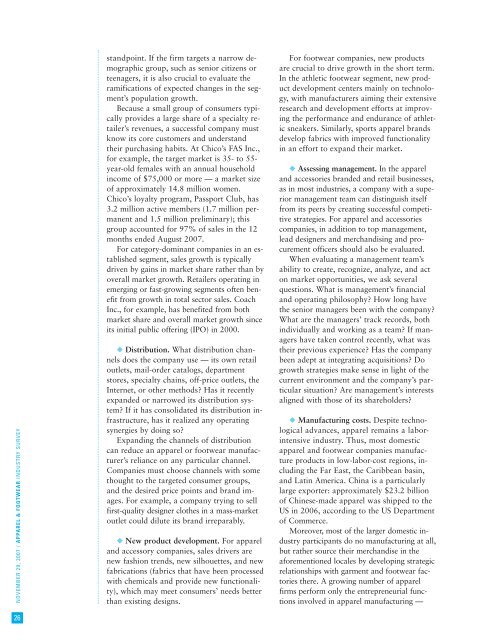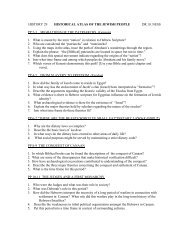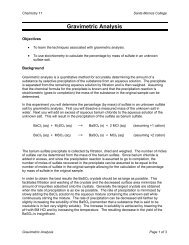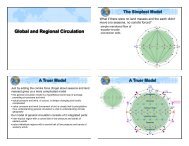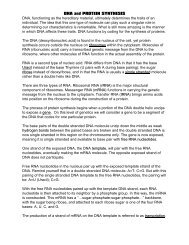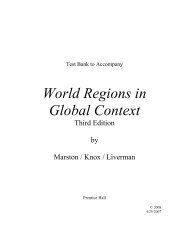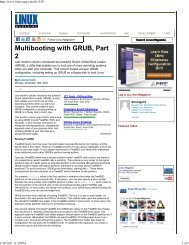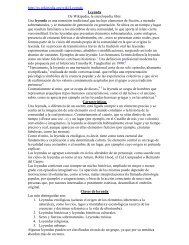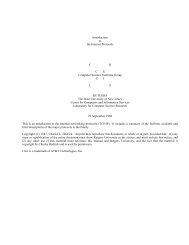You also want an ePaper? Increase the reach of your titles
YUMPU automatically turns print PDFs into web optimized ePapers that Google loves.
NOVEMBER 29, 2007 / APPAREL & FOOTWEAR INDUSTRY SURVEY<br />
26<br />
standpoint. If the firm targets a narrow demographic<br />
group, such as senior citizens or<br />
teenagers, it is also crucial to evaluate the<br />
ramifications of expected changes in the segment’s<br />
population growth.<br />
Because a small group of consumers typically<br />
provides a large share of a specialty retailer’s<br />
revenues, a successful company must<br />
know its core customers and understand<br />
their purchasing habits. At Chico’s FAS Inc.,<br />
for example, the target market is 35- to 55year-old<br />
females with an annual household<br />
income of $75,000 or more — a market size<br />
of approximately 14.8 million women.<br />
Chico’s loyalty program, Passport Club, has<br />
3.2 million active members (1.7 million permanent<br />
and 1.5 million preliminary); this<br />
group accounted for 97% of sales in the 12<br />
months ended August 2007.<br />
For category-dominant companies in an established<br />
segment, sales growth is typically<br />
driven by gains in market share rather than by<br />
overall market growth. Retailers operating in<br />
emerging or fast-growing segments often benefit<br />
from growth in total sector sales. Coach<br />
Inc., for example, has benefited from both<br />
market share and overall market growth since<br />
its initial public offering (IPO) in 2000.<br />
◆ Distribution. What distribution channels<br />
does the company use — its own retail<br />
outlets, mail-order catalogs, department<br />
stores, specialty chains, off-price outlets, the<br />
Internet, or other methods? Has it recently<br />
expanded or narrowed its distribution system?<br />
If it has consolidated its distribution infrastructure,<br />
has it realized any operating<br />
synergies by doing so?<br />
Expanding the channels of distribution<br />
can reduce an apparel or footwear manufacturer’s<br />
reliance on any particular channel.<br />
Companies must choose channels with some<br />
thought to the targeted consumer groups,<br />
and the desired price points and brand images.<br />
For example, a company trying to sell<br />
first-quality designer clothes in a mass-market<br />
outlet could dilute its brand irreparably.<br />
◆ New product development. For apparel<br />
and accessory companies, sales drivers are<br />
new fashion trends, new silhouettes, and new<br />
fabrications (fabrics that have been processed<br />
with chemicals and provide new functionality),<br />
which may meet consumers’ needs better<br />
than existing designs.<br />
For footwear companies, new products<br />
are crucial to drive growth in the short term.<br />
In the athletic footwear segment, new product<br />
development centers mainly on technology,<br />
with manufacturers aiming their extensive<br />
research and development efforts at improving<br />
the performance and endurance of athletic<br />
sneakers. Similarly, sports apparel brands<br />
develop fabrics with improved functionality<br />
in an effort to expand their market.<br />
◆ Assessing management. In the apparel<br />
and accessories branded and retail businesses,<br />
as in most industries, a company with a superior<br />
management team can distinguish itself<br />
from its peers by creating successful competitive<br />
strategies. For apparel and accessories<br />
companies, in addition to top management,<br />
lead designers and merchandising and procurement<br />
officers should also be evaluated.<br />
When evaluating a management team’s<br />
ability to create, recognize, analyze, and act<br />
on market opportunities, we ask several<br />
questions. What is management’s financial<br />
and operating philosophy? How long have<br />
the senior managers been with the company?<br />
What are the managers’ track records, both<br />
individually and working as a team? If managers<br />
have taken control recently, what was<br />
their previous experience? Has the company<br />
been adept at integrating acquisitions? Do<br />
growth strategies make sense in light of the<br />
current environment and the company’s particular<br />
situation? Are management’s interests<br />
aligned with those of its shareholders?<br />
◆ Manufacturing costs. Despite technological<br />
advances, apparel remains a laborintensive<br />
industry. Thus, most domestic<br />
apparel and footwear companies manufacture<br />
products in low-labor-cost regions, including<br />
the Far East, the Caribbean basin,<br />
and Latin America. China is a particularly<br />
large exporter: approximately $23.2 billion<br />
of Chinese-made apparel was shipped to the<br />
US in 2006, according to the US Department<br />
of Commerce.<br />
Moreover, most of the larger domestic industry<br />
participants do no manufacturing at all,<br />
but rather source their merchandise in the<br />
aforementioned locales by developing strategic<br />
relationships with garment and footwear factories<br />
there. A growing number of apparel<br />
firms perform only the entrepreneurial functions<br />
involved in apparel manufacturing —


